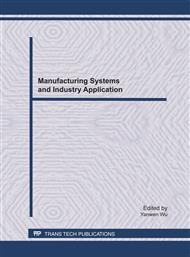[1]
Yi Feng, Lin Yaping. The research present situation and development tendency of Chinese automatic words segmentation technology. Software Word, 1996 (in Chinese).
Google Scholar
[2]
Zhang Chunxia, Hao Tianyong. The research present situation and difficulty of Chinese automatic words segmentation. Journal of System Simulation, 2005 (in Chinese).
Google Scholar
[3]
Jie Chunyu, et al. Discuss Chinese automatic words segmentation. Journal of Chinese Information, 1989 (in Chinese).
Google Scholar
[4]
Xu Hui, et al. Written Chinese automatic words segmentation expert system realization. Journal of Chinese Information, 1991 (in Chinese).
Google Scholar
[5]
Yao Tianshun, et al. Based on rule Chinese automatic words segmentation system. Journal of Chinese Information, 1990 (in Chinese).
Google Scholar
[6]
Li Jiafu, Zhang Yafei. A kind of probabilistic model words segmentation system. Journal of System Simulation, 2002 (in Chinese).
Google Scholar
[7]
Jin Yu, Lu Qiming, et al. Maximum probability Chinese automatic words segmentation algorithm based on the context correlation. Computer Project, 2004 (in Chinese).
Google Scholar
[8]
Tan Qiong, Shi Mizhi. Different meanings processing in the words segmentation. Computer Project and Application, 2002 (in Chinese).
Google Scholar
[9]
Xia Ying, Chang Xingong, et al. Chinese character text recognition of using context correlation information. Journal of Chinese Information, 10(1) (in Chinese).
Google Scholar
[10]
Zhang Guoxuan, et al. Fast written Chinese automatic words segmentation system and algorithm design. Journal Of Computer Research and Development, 1991, 1 (in Chinese).
Google Scholar
[11]
David Yarowsky. Unsupervised Word Sense Disambiguation Rivaling Supervised Methods. Department of Computer and Information Science University of Pennsylvania Philadelphia, PA 19104, USA.
DOI: 10.3115/981658.981684
Google Scholar
[12]
David Yarowsky. Word-Sense Disambiguation Using Statistical Models of Roget's Categories Trained on Large Corpora. AT&T Bell Laboratories 600 Mountain Avenue Murrary Hill NJ, 07974.
DOI: 10.3115/992133.992140
Google Scholar
[13]
Christopher D. Manning, Hinrich Schutize(write), Li Qingzhong(translate), et al. Statistics natural language processing foundation. Electronics industry publishing house, 2005 (in Chinese).
Google Scholar


